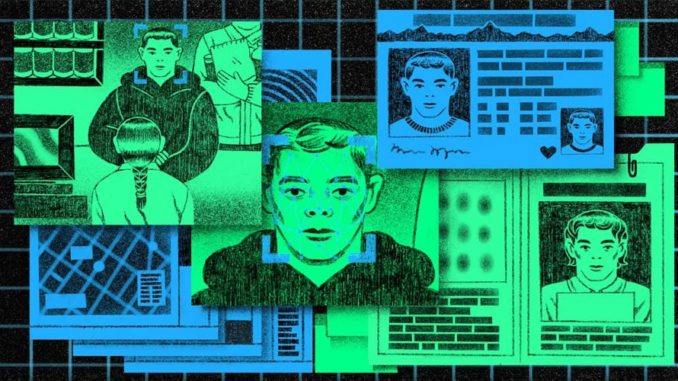
Artificial intelligence is the replication of human intellect in computers that are programmed to think, act, and imitate our behaviors.
Artificial intelligence is frequently considered a subset of machine learning. It is the science of computer algorithms that can learn and improve over time. It allows the software to anticipate outcomes accurately without having to be trained to do so.
In forensics, Artificial Intelligence and Machine Learning play a very crucial role. Investigators can automate their procedures with these two technologies, allowing them to swiftly identify information and insights, saving time in the process. Read on to learn how AI is improving the field of forensic investigation and crime detection.
AI in Forensic Investigation
The use of Al technology improves the likelihood of detecting and investigating cybercrime. This enables forensic experts to get to the source of the problem swiftly and effectively.
Al assists detectives in quickly solving a crime and saves them a lot of money. This will allow them to concentrate more on the areas where cybercrime is most likely to occur. By combing through unorganized data collected by investigators, Al can discover suspicious and illegal activity. Al offers cognitive-data analytics, which allows users to quickly consume and evaluate data. It may also make it easier for detectives to go through felony convictions and find prospective culprits.
Al can assist in identifying certain components in pictures and films that are being investigated. Al also assists in identifying similarities in communication, place, and time. This allows detectives to pinpoint the location of the next crime or event.
How does it work?
During an inquiry, it’s tempting to depend on past experience and expertise, using an intuition-driven method. A skilled forensic investigator must seek direction from the front rather than the back. The volume of data that has to be analyzed is growing, and the type of that data, as well as how you understand it, is changing all the time. Human prejudices are simply amplified as a result of this.
As a result, a forensic team must conduct an integrated analytics-driven inquiry.
The following is how it works:
- They begin by evaluating where a firm falls on a maturity model that encompasses the people, procedures, and technologies utilized to detect fraud in order to determine how effective it is at fraud detection and conducting forensics.
- Then they combine unstructured and structured data from various sources to create risk models, which are crucial for advanced analytics.
- Advanced analytic models based on data, including text analytics and computational modeling, are then utilized to rank risks at the firm level rather than at the data layer.
- Furthermore, advanced analytics approaches like MI and cognitive-data analytics are used.
AI in Crime Detection
Every region’s infrastructure is becoming increasingly intelligent as governments strive to help their country expand at a rapid rate. Countries’ smarter and more connected infrastructure is delivering real-time data to government authorities. Real-time data, combined with AI, can aid in the detection of crimes as they occur.
Detecting gunfire
Police can arrive at a scene where shooting is occurring without being called or without any officers observing the firing. What is the best way to accomplish this? With the assistance of AI technology, the answer is yes. Sensors, for example, can be put in municipal infrastructure. The sensors will be linked to a cloud-based program that will be able to correctly identify and pinpoint gunshots. The timing and sound of gunshots are recorded by each sensor. This information from numerous sensors can aid in the investigation of the occurrence. Sensors can also assist in determining the shooter’s location. The total information, together with the specific location of the gunshot, is then forwarded to police headquarters. The information is provided as a pop-up notice on a computer or mobile screen. Only 12% of gunshot occurrences are reported to the authorities, according to research. In such situations, employing AI technology to detect gunshots and provide notifications to police will assist them in responding efficiently to a shooting event.
Investigating the crime site for clues
Complex murder situations necessitate a thorough investigation. But what if a machine could assist in the detection of crucial clues from the scene of the crime? When police officers arrive at a crime scene, they take photos of the area where the crime occurred. The photos are utilized to look for hints and evidence that may lead to a fresh connection to the murder. AI-enabled technologies can aid in the detection of hints in police images. For example, if a toy or gun from the scene of a crime is photographed, the official database may be examined to see if the same toy or weapon was used in any prior killings. It may not prove conclusively that the prior crime was committed by the same person, but it will open up a line of inquiry worth following upon.
Detecting bombs
Terrorists and criminals utilize bombs as one of their most deadly weapons. A single bomb has the potential to kill hundreds of people. Robots may be able to detect aluminum powder, nitroglycerin, passive infrared sensors, tetranitrate, and other bomb-making materials. AI-enabled bots with the capacity to recognize bomb components may quickly detect explosives without endangering security personnel’s life.
Conclusion
The application of artificial intelligence (AI) in crime prevention and detection allows the firm and local officials to accurately minimise crime. While the crime level has been declining for decades, overall law enforcement spending has increased. With AI’s advantages come certain inherent hazards when it comes to crime preventing and detection. For example, depending on unintended racial prejudice incorporated into the AI system, a person may be classified as a criminal or susceptible to criminal activity. Such threats should be examined openly and openly in order to decide whether or not using AI to stop criminals is a strategic match.
